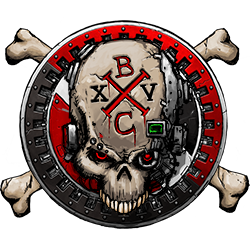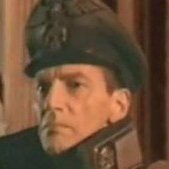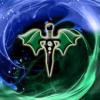Search the Community
Showing results for tags 'Drukari'.
-
Pics of my "finished" succubus. She'll be leading the witches at every opportunity. After she survives a battle, I'll paint the whip spikes and golden rings on the trophy rack. Thanks for looking.
- 2 comments
-
- Drukari
- aeldari pirates
-
(and 1 more)
Tagged with:
-
These models count as Witches in my Grimdark death cult army. In 40k lore this is part of an Ynnari army with an emphasis on pirates and banshees. It has a craft world, a wych cult, and a few kabalite bands joining in for kicks. I'm generally pleased with the results here. Colors used are: turbo dork shifting sands GW auric gold GW terrain turquoise GW hexametric green GW carroburg crimson Vallejo flat yellow army painter matte black These models look like the Philadelphia Eagles. Thanks for looking.
-
- aeldari pirates
- Aeldari Corsairs
-
(and 3 more)
Tagged with:
-
Playing around with ideas to improve pics of models. Speaking of, I have painted models not posted yet and I'll get around to that. Not sure how replacing backgrounds on infantry will work, but at least there will be pics of dark reapers, more corsairs, and banshees incoming on my moribund blog.
-
[Placeholder for resource gathering, discussion and preparatory content for Eldar-themed games.] ++ THE STARS, OUR RUINATION ++ ++ THE AELDARI DARK AGE ++ (A Treatise upon the Aeldar, and premise for roleplaying them in M30 and beyond, compiled by Ordo Xenos Scriptor Primo, Adept Hyronimus Bosch, M.42, by the blessed command of His Most Learned Masters =[REDACTED]= of the Ordo Xenos.) 'It was not a quiet thing. To go silently into the Night was beyond us, for night had already come, and it had a name: She Who Thirsts.' - Warlock Ranoch Alai'Karadryel, First Soulguard of the Shrine of Wayfarers, Craftwold Alaitoc. 'Hell is empty, and all the devils are here!' - Gwillim Shiek'Caspar, Human Dramatist and Sage. The Great Remembrance: The Imperium of Man has stood the test of time, forged in and by events which have echoed darkly throughout millennia of our existence. It falls to the great edifaces of the Imperium to recount their part in it, for each has committed acts of courage and atrocity as they will in the name of the Emperor, yet each account differs in degree to either impress or expose. Mainly, Imperial history comes from deeply entrenched sources within the Inquisition, or even the Space Marines, who dutifully keep such records, the latter more intact than the first, for Astartes are ever in want to recount their grievances and shortfall, and, likewise, their opportunities for vengeance. Not many, indeed few, are alive today in this, our 42nd Millennium that would recount the steps of the Emperor on Ullanor with any great clarity - but the few who do can recall the lustre of his armour, and the colour of the dust upon his cloak. Such radiance exists in thier memories alone, and so, little by little and oft poorly understood, such remembrances are stored, hidden away as the great treasures they are - for there is nothing more important than being close to the fabric of origin, the weave of historical events both great and terrible, from which all subsequent existence and decisions flow. It gives a reason for persistence in the face of an uncaring universe, and yes, oblivion threatened upon that people in the howling darkness, each a small spark in a mightier conflagration, convulsing, shimmering, and provided succour by their cause - an immortal man of immortal power. It is a source of thier courage, and a long thread of hope, thinly extricated from the violent roil of warp storms and silent thunder of the cosmos, to cling to, to remain upright in the gale which batters them. Yet, the Eldar experience this as well - except almost every Eldar remains close to the source, to this fountain of youth which pervades all they do. It is a thing quickly countenanced upon that race since birth, their gestational development replete with songs of warning, of temperance, even ensconced in the strange, precarious, otherworldly safety of the womb. These songs were old when the stars were young, and so, whilst the Humans of the Imperium struggle to even comprehend the incredible adversity heaped upon them at birth, and by the time they have done so are likely dead, the Eldar are given the understanding of their birthright - the heavens are the inheritance of these immortal creatures, for they were not only made from it, but for it, and each day they exist is a deep connection not just to the beginning of their ancient race, but the commencement of the universe the Imperium and Younger Races take for granted. It is a story recounted always, and doomed to an eternal ruin, even as they see the lesser races make the same mistakes they themselves did. The Eldar remember their glories, and their histories, and the time when all was shining and peaceful. Through intemperance and wantonness, they discarded it, and in that great disposal of life and sanity, became bitter and resentful of themselves, lomging for a return to wonder and the absence of the shadows stalking their souls. It is this which proves so challenging in their encounters with other races, since Mankind's oft wilful ignorance and blundering folly reminds them so closely of their own tottering towards doom, the promise of eternal certainty and peace eclipsed in the half light - half-life - of the dark ravages of a wounded heart and limitless mind. The Differences of the Everlasting Mind: The so-called aloofness perceived by the other races is a byproduct of self-inflicted wounds, and the painful admission their race was responsible for much of the tumult which now engulfs every living thing, and now to them falls the task of surviving the downfall of that inherited existence. Indeed, the motives of the Eldar are deeply - and intentionally - concealed and misunderstood that races ignorant of the true scale of the threat find them capricious and incomprehensible. In part this is due to the motives of the Dark Kin, who, acting as slavers and reavers break even the fragile peace that exists betwixt the flickering lights of Mankind and Eldar threading order in the black canvas of the galaxy. The concealment is also a defence mechanism against the inevitable - that the scale of the fall should be revealed, and the Eldar's power be appraised for the fraction of what it once was. To understand how the facade of projected sovreignty is applied is to grapple with the instantaeneous nature of the ancient race's technology, a mirror of the completeness and adroit comprehension capable in the Aedar mind, and the seeds sown into the ultimate downfall. To Mankind, now wallowing in desperate stagnation, leaps of innovation is frowned upon, but yearned for, that things may improve and make the life of those who serve Him easier, safer and that duty may be done swiftly. It is a groaning shift of a leviathan, putting wheels into motion that may not resolve their screeching resentment of activation for centuries. Yet, it is within the power of the Eldar to deliver - now - and always has been. Indeed, this impatience is waht brought about the depths of gluttony, the terrible hunger of want - for unlike the hard-serving toilers found under the Imperium's own auspice, the Eldar became idlers, lackadasical dreamers, and fondlers of lethargy. Therefore it is the shame of this that precludes inspection, the desultory glances and guarded secrets, but it is not the sole thing. Completing the trifecta of burden is the simple truth: The Eldar must hide their own words and souls from the very one who pursues them eteranally. Known from Eldari Lexicii as She Who Thirsts. As all Emperor-fearing and loyal servants know, words and names have power, and the secrets of the universe are terrible. Think well of the maxims imparted by Inquisitor Lord Czevak, who has the most dealings with this old xenos race, and you have the soul of the Eldar in written, solid form. 'Ask not the Eldar a question, for they will give you three answers; all of which are true, and terrifying to know.' These truths are most evident as stemming from the great division in the Aedar's empire and character in a cataclysm known as the Fall. The Doom of the Asuryani: Via a translation of ancient texts, the exact date of the Fall is surrounded and obscured by events only described as the 'Terror'. The long-shrouded texts within the Black Library carry reports from outliers such as Exodites, and the original inhabitants of the Craftworlds. Launched in a mix of desperation and technological supremacy, these cosmos-faring colossi carried many hundreds of thousands of Eldar into the glacial embrace of galaxy-spanning tours which would take aeons to complete. Bookended afore and after by ruinous bloodletting, the final collapse of the old race-as-was appears to have occurred in Imperial terms around M.25. The first claws of She Who Thirsts scratched through the embryonic miasma of the warp, and into the Asuryani psyche at around M.18 with the plethora of pleasure cults, and general malaise that began to take hold in many different echelons of the culture. What was an idle fetish became an obsession, what was benign became malignant. All things were achievable to the Eldar will, thier command of psychic mastery and utter control of thier own, Old One given technological prowess, and so they engineered whim into cudgels of cultural, psychological and emotional mortification. The sane formed enclaves, preaching restraint and withdrawal from hedonistic delinquence, a return to old ways of order and challenge against the troubles of soul and firmament. Yet all knew they were somehow altered, all marked for a death at the hands of a wickedness wearing their face, speking their tongue. This was the abandonment of reason in a slowly pulsing wound, which was desperately trying to be stemmed, the lifeblood of a civilisation, of a race, being poured out to rapturous applause, a libation to oblivion. This was the First Aeldari Dark Age. The Setting: Once of a cohesive body and mind, the fractures that appeared started to fragment the Eldar flesh and psyche, for both things were the same. Yet even just before the Fall, the Aeldari were not yet fully doomed. A full spectrum of differing ideals, goals, paths and possibilities were in competition. Sects operated which were to form the burgeoning Wych and Cabal cults, along with the tender flickering of the Craftworld's Path of Seer, Warrior and Outcast. These Temples or Shrines to the Aspects were not yet fully established, nor were all the Eldar gods slain or imprisoned. The Asuryani had large fighting forces, mainly composed of automata and professional warriors, pushing out on the fringes of known space, ever expanding the empire, with their deities in harness to these goals - and the previously benign warp become more and more tumultuous. Sanity battled madness, each so fulfilling to the Eldar mind, with the absolute conviction it was right and true. The Factions: The Coreworlds: The Aeldari once lived on many worlds, but their homelands, the crucible of their birthplace was what now abides in the Eye Of Terror (Croneworlds). The cults of deviance had easily taken root here, for like Terra, where there are riches and power, there is decadence aplenty. Career Paths: Any. Cosmopolitan: Coreworlders gain (Talented) for any one Skill. The Corsairs: The Eldar who sail the stars, exploring, fighting, raiding and repelling the enemies of the Eldar. They form the ad-hoc navy of the Craftworlds they support, or pitch thier aid to noble houses with whom their idiosyncrasies align. Career Paths: Voidfarer, Pilot, Explorer, Militia (Non-Guardian), Seer. Star Children: Corsairs never count Null-G as Difficult Terrain. The Craftworlders: The city-sized spaceship voidfarers who have abandoned the Coreworlds in order to be free of the excesses and extremes, those who heard the call of reason, and saw the frightful menace swelling to encompass their race, using the strictures of the myriad Paths set by the strange and capable messianic figures of the Phoenix Lords and their discipline. Career Paths: Any Civilian, Militia Guardian (Defender, Storm Guardian), Aspect Warrior, Seer. Disciplined: Craftworld Eldar may make use of Special Tactics (Squad Mode, effectively). Soul Stone (Uaigh'fhánach). The Exodites: Outcasts of easy living and the knowledge of conurbation, these frontier-types value practicality, animal husbandry and agriculture, blended with the technological marvels to facilitate it. Shirking all but the Outcasts and Pathfinders who tread the Road of the Wanderer, and maybe the Corsairs they deal with, they immerse themselves in caretaking the maiden Worlds entrusted to them. Career Paths: Ranger, Pathfinder. Frontiersman: Exodites treat all Advanced Skills like Wrangling, Tracking, Survival etc as Basic Skills. The Hedonists: A gestalt nomenclature for the rebellious, insane, or depraved. Varying degrees of line to be crossed or those that have been. Found in Corsair parties and Coreworld salons, these salacious slaughterers and pleasure-indulgers are as varied as those they despise or ignore as weak. In control of several noble houses, if not subverting them from within, their reach is long, and their appetites deep. Career Paths: Caballist, Wych, Haemonculus. (Ability). Roleplaying as an Aeldar: Prima Facie: The superficial similarities in appearance notwithstanding, the Eldar present an interesting and varied challenge to beginner and veteran Roleplayers alike. The default setting, I would argue, is that of supercilious, aloofness. This isn't a bad start, as on the face of it, most Eldar portrayals have this all in common due to their shared history and perspective. However, there is a lot of latitude in even this attitude, especially with the situation during Fall's Prelude. The ability to portray a proto-Drukhari in a mix with normal Eldar provides for a sparky, dynamic party mix as objectives are confronted wih varying conflicting methods and attitudes. Most Eldar are contemptuous of lesser races, and with good reason; as the primary inheritors of the universe, created by the old gods as a psychic weapon and the reward was eternity as they willed. This outlook is more likely the case pre-Fall, and more so post-Fall due to the terrible resentment of loss. The Psyche: The Eldar are agile and graceful, and all things must extol this. It is a common theme to all PC Archetypes, and as such, clumsiness in speech, thought and action are all frowned upon. This is the standard the Aeldari hold, and it is one which can be so easily exploited when there is a problem. Emotionally, they have no real soft pedal, all their emotions are heightened, far in excess of the Human range, and delivered or expressed immediately. In gameplay terms this would likely be represented by some kind of Insanity Point mechanism, and person-to-person work with the GM in Session Zero to establish what these boundaries are (obviously board compliant, here). The brakes on this train would be applied by the Eldar Path chosen, so each Path (or lack thereof) would restrict the accumulation of IP's, but more IP's lets the PC do more crazy things (Perhaps a Bloodlust Talent which more IP = more bonus to attack, in exchage for less defence). The Eldar language is full of metaphor and parable, each strand of thought is a spiralling whorl of indirectness and hidden meaning. In practice, this would exceptionally tedious to go through page after page, and should be mostly used 'outside' of the immediate Character - so for example, interaction with Mon'keighs, Uruks, Double-Mon'Keighs, and people from Mablethorpe. You may refer to each other by maybe two or three names - each one appropriate to a facet or function, or 'friend' name, but perhaps not a true one. This may be a process of many different wills - as a psychic race, obviously the power of names is known, but as a cultist it is perhaps wise to have a 'street name' in order to avoid connotations...
-
Index Xenos: Kabal of the Twin Blades Name: Kabal of the Twin Blades Archons: Dûrion Agaith Rincavornon and Lûgion Rincavornon Base of Operations: Pocket-Realm of Liranshadagcekhanel (Liran-Shad-Ag-Ce-Khanel) Twin Blades The Kabal of the Twin Blades is led by twin brothers, Dûrion and Lûgion, who took control of the Kabal from their cousin. Dûrion had been contracted to fight on behalf of his cousin in taking down a rival Archon, while Lûgion had been hired by that Archon to defend his interests. When the two forces came into contact, the brothers Rincavornon combined their forces and turned on both their Cousin and his Archon target. It was a bloodbath, and from it the Twin Blades were born. Their Modus Operandi never changed since that day. Often one of the brothers would take a job fighting for one warlord while the other would fight for their rival, then when the time was right they would flip the tables on both forces and walk away with all the spoils of war for themselves. The older of the twins, Dûrion, is an enigmatic being. It is said that after his birth he was never seen without his signature mask, crafted from a reflective metal with but a single slit for his left eye. He is a master of swordplay, wielding a huskblade that he took from the corpse of his cousin upon the success of the twins' coup. An exceedingly proud warrior, Dûrion cuts down unworthy foes with a blast pistol, not even stopping to finish off those that survive the lance of unlight. Lûgion is the younger by scant seconds, yet it is said he used that moment alone in the womb to start a lifetime of schemes. After staging the Coup and taking command, Lûgion would become the public face of the Kabal, preferring the courts of nobility to the battlefields of warriors. Yet he is no less formidable than his brother, for Dûrion would insist that he train his younger twin in case of the inevitable assassination attempts they were sure to face. History of the Kabal M30-M40 Age of Pain Family Tithes The eldest member of the Rincavornon family, Archon Zyth Rincavornon places heavy tithes on his kin, stating that his protections for the family costs him an exuberant amount of resources. For his young cousins, the twins Dûrion and Lûgion, Archon Zyth not only places a higher tithe but confiscates the majority of their Kabalites. The Tithes That Bind The twins orchestrate a coup to overthrow Archon Zyth. They secretly contact the most powerful members of their family and convince them to attack Zyth at a great feast in his honour. However, nobody other than the twins knows who is loyal to Zyth and who is part of the Coup. When Zyth makes a toast to his own good health all hell breaks loose with downtrodden and overly taxed members of his family vying for the kill. Dûrion and Lûgion make sure to not be present at the feast, and set off a stolen Void Mine hidden within the great ice sculpture centrepiece. When the dust clears the twins are the only members of their family left with any power to their name. Warriors of Iron Offering their services to human pirates to assist them in capturing supplies from Imperial convoys, the Twin Blades also provide protection to the convoys. Dûrion and Lûgion each lead a force of Kabalites, moving their vessels to strike down both forces and escape with everything. However a sizeable fleet of Heretic Astartes vessels appears, in league with the pirates. Caught flat footed and ill prepared to face such overwhelming firepower the brothers strike a deal with the Astartes leader named Viktor. Splitting the bounty from the convoy, both forces retreat. Lûgion finds Viktor to be a cunning individual, seeing in him a potential asset. A Pact with Reavers Physical Characteristics: Like the rest of the Dark Eldar race, the Twin Blades' kabalites are much taller and more slender than human beings. Spanning millennia in lifespan, their skin ranges from an alabaster pale to ghostly translucent grey-blue as the Dark Eldar ages. Eye colour ranges greatly amongst the Dark Eldar from natural purples and blues to cosmetically altered irises suiting the personality of the individual kabalite. As with nearly every Kabal, the majority of it's members are clones and artificially born. Where the Twin Blades differs is that even the cloned Dark Eldar are created to such exacting standards that many are indistinguishable from Trueborn. Clones that are judged less than utterly perfect are discarded, either destroyed or sent to the Haemonculus covens as payment for their services. Where scars are seen as battlefield honours in other Kabals, the Twin Blades see them as a reminder that a foe has bested the warrior. As such Kabalites do not attach their armour via hooks and blades into the skin but with a resin that constricts on contact with the air, leaving skin unmarred but securing their armour tightly. In an effort to further increase the number of their Trueborn, those among the nobility may select those Kabalites that show promise and take them under their wing. If the chosen Kabalite survives the exacting standard of their betters they are taken high into the Kabal's fortress-spire to be cloned and given several concubines in the hopes that they may also sire natural offspring. Base of Operations: The Kabal of the Twin Blades, while holding many assets both within Commorragh and without, has two main bases of operation. The first and most well known is the sub-realm of Liranshadagcekhanel (roughly translated to Low Gothic as The Spear at the neck of False Gods), a pocket-dimension of Commaragh with a vast spire at its centre. This structure, known as The Spear that Stabs the Heavens, is a vast edifice of black iron and unnatural glass more akin to a fortress than the regal palace that it appears to be. Combat Style: The Kabal of the Twin Blades officially only works with it's own kabalites, dozens of squads deploying in Raiders and Venoms in lightning fast fly-by shooting runs. This is due to a deeply ingrained distrust of other Dark Eldar, after all the Twin Blades are happy to stab others in the back so why wouldn't others? When the Kabal goes to war, their Kabalites act with a strict military discipline most unusual for their kind. Manoeuvres such as performing covering fire, tactical withdrawals and feinted counter-attacks are frequently employed which is one of the reasons their services as Mercenaries are so high sought after despite their duplicitous nature. Frequently following the Twin Blades on their missions or raids are several Hellion and Reaver gangs, while not officially a part of the Kabal they are eager youths hoping to attract the notice of a Kabalite and thus earn a sponsorship for joining the Kabal proper.




